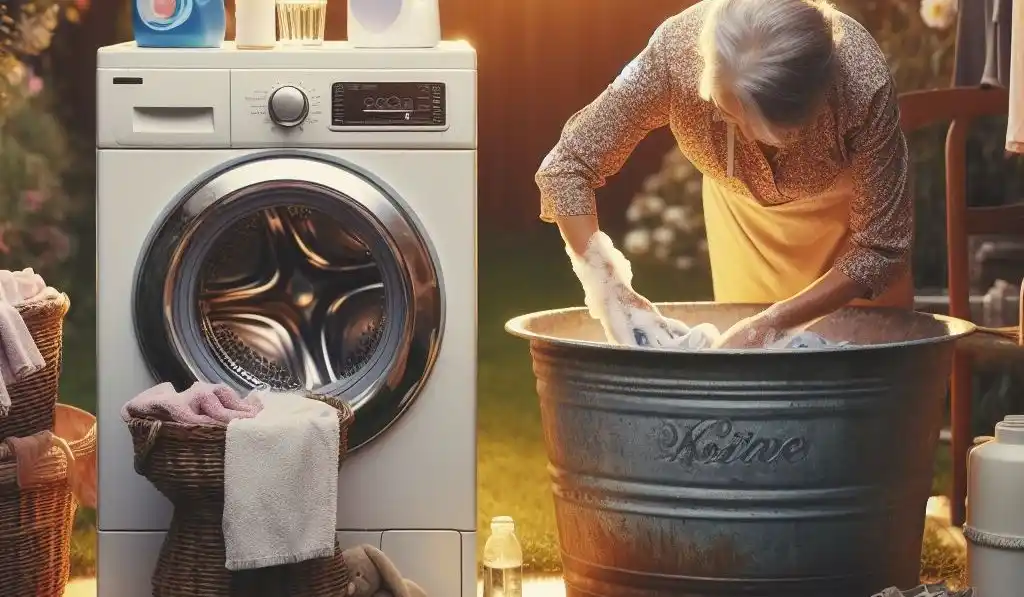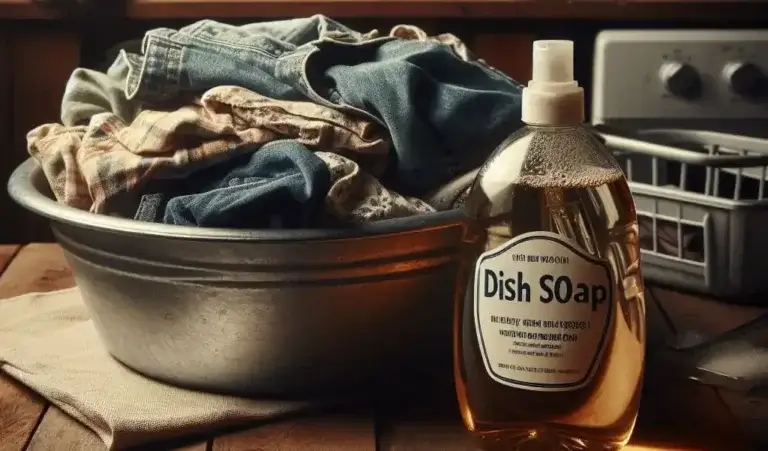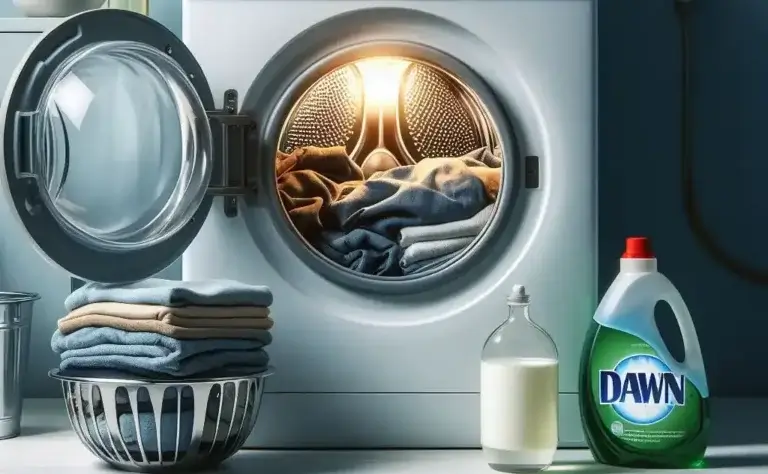Can I Wash Underwear With Clothes? The Complete Guide To Wash Your Underwear Separately or With Clothes
Washing your underwear properly is an important part of personal hygiene. But a common question many people have is – can I wash my underwear together with other clothes or should I wash them separately?
In this comprehensive guide, we will cover everything you need to know about washing underwear, including:
- Should You Hand Wash Underwear Separately?
- Wash Underwear to Kill Bacteria
- Using Your Underwear in a Washing Machine vs Handwashing Your Underwear
- Water Temperature to Wash Underwear
- Detergents for Washing Underwear
- How Often to Wash Underwear
- Considerations While Checking the Care Label on Different Types of Underwear
- Tips for Making Your Underwear Last Longer
- FAQs on How to Hand Wash Underwear
So whether you’re wondering if you can save time by washing your underwear with the rest of your laundry or want tips on getting your delicates clean, this guide has got you covered!
Table of Contents
Should You Wash Underwear Separately?
When it comes to washing underwear, the first question many people have is “Should I wash my underwear separately?”
The main reason to wash underwear separately is to prevent the spread of bacteria to other clothes. Underwear is worn in intimate areas and can harbor bacteria like staphylococcus and candida fungus.
Washing underwear together with other clothes means these germs can transfer over in the wash. This is especially problematic for delicate items like socks and swimwear.
So while it may be more time-efficient to throw your underwear in with the rest of the laundry, it’s best practice to wash underwear separately. This helps contain bacteria and ensures your other garments stay clean.
Some other good reasons to wash underwear separately include:
- Prevent color transfer – Dark-colored underwear can sometimes bleed dye onto lighter clothes in the wash.
- Avoid snags – Bras, delicate lace underwear, and stockings are prone to snags and should be washed gently on their own.
- Accommodate different wash cycles – Delicates need a gentler cycle while sturdy cotton underwear can handle a hotter, longer wash.
So taking the extra few minutes to wash your undergarments separately pays off! Your underwear and the rest of your clothes will come out fresher and last longer over time.
Killing Bacteria in Underwear
Now that you know why it’s important to contain bacteria by washing underwear separately, how do you kill germs effectively?
Washing underwear in hot water is the key to killing bacteria lurking in the fabric. Hot water helps dissolve the oils and sweat that bacteria feed on.
The ideal water temperature to wash underwear is 60 degrees Celsius (140°F). This high heat helps destroy bacteria and fungi, leaving your underwear fresh and clean.
Using a laundry detergent formulated for delicates will also boost your cleaning power. Look for detergents containing antibacterial agents that help sanitize further.
And while handwashing allows you to target stains, using a washing machine is best for eliminating bacteria. The hot wash cycle maintains a high temperature for longer, giving a deeper clean.
So for ultimate hygiene, wash your underwear separately in hot machine cycles with an antibacterial detergent. This removes oils, sweat, and bacteria that regular washing fails to tackle.
Can I Wash Underwear With Clothes

Ah, the age-old laundry quandary: should your undergarments, those intimate guardians of comfort, embark on a washing voyage alongside your everyday clothes, or deserve a solo spin cycle in the porcelain ocean? The answer, dear laundry hero, is as intricate as the embroidery on your favorite bra.
Fabric Fortunes:
Let’s unfurl the map of fabrics. Delicate silks and whisper-thin lace yearn for a serene solo cruise, far from the roughhousing denim and burly towels. Imagine a lace bralette tangled with a denim jacket – not a pretty sight, nor one conducive to garment longevity. For these fragile comrades, a mesh laundry bag offers a protective life raft.
Hygiene Hazards:
Then there’s the hygiene hurdle. Heavily soiled garments, veterans of the daily grind, carry a bacterial battalion best kept quarantined from innocent t-shirts. Pre-treating these seasoned warriors with a stain remover or enzyme cleanser before joining the main fleet is crucial. Consider them special forces units, needing a targeted mission before integrating with the regular troops.
Color Chaos:
Color, the vibrant language of our wardrobes, demands careful consideration. Dark undergarments, those brooding pirates of the laundry basket, can bleed their hues onto unsuspecting light-colored comrades, transforming a pristine white shirt into a tragic tie-dye masterpiece. Separate the darks from the lights, like diplomats navigating a delicate political landscape.
Time and Tide:
We can’t ignore the siren song of convenience. Washing everything together saves precious minutes, a boon for the time-pressed adventurer. But remember, overloading the washing machine leads to a mosh pit of tangled limbs and ineffective cleaning. Fill your washer wisely, a well-balanced dance of efficiency and cleanliness.
Finding Your Laundry Nirvana:
Ultimately, the choice is yours. Are you a staunch separatist, guarding your undergarments with the vigilance of a castle gatekeeper? Or are you an amalgamist, trusting your delicates to navigate the swirling currents of the laundry cycle?
Here are some tips to find your laundry nirvana:
- Know your fabrics: Delicate undergarments? Gentle cycle and mesh bag it is. Sturdy cotton sports bras? They can hang with the big boys.
- Pre-treat the heavy hitters: Give heavily soiled items a solo pre-wash mission to neutralize bacterial threats.
- Respect the color code: Keep darks and lights separate, like guests at a formal party, avoiding wardrobe malfunctions.
- Don’t overload the machine: Let your clothes breathe, allowing for proper cleaning and preventing fabric carnage.
- Air dry when possible: Gentle breezes are kinder to your undergarments than the fiery furnace of the dryer.
So, the next time you stand before the washing machine, a mountain of laundry at your feet, remember: the fate of your undergarments lies not in absolutes, but in informed choices. Be a laundry strategist, a master of fabric fortunes, and emerge victorious, with clean and happy garments for all.
May your laundry days be ever blessed with pristine undergarments and the sweet satisfaction of a job well done!
Bonus Tip: For those who crave extra peace of mind, consider investing in a dedicated delicates cycle on your washing machine. This gentler option offers the perfect compromise for those who like to mix and match.
Remember, the key to a harmonious laundry voyage is knowing your garments, respecting their needs, and making informed choices. So, set sail with confidence, dear laundry hero, and conquer the undergarment odyssey!
Washing Machine vs Handwashing Underwear
You might be wondering – should I use the washing machine or handwash my underwear?
While handwashing gives you more control, using a washing machine is generally more effective for keeping your underwear clean.
Here’s a look at the pros and cons of each method:
Washing Machine
Pros
- Maintains consistent hot temperature to kill bacteria
- Better at removing body soils and stains
- More efficient for frequent washing
Cons
- Aggressive agitation can damage delicate fabrics
- Underwire bras can get twisted
Handwashing
Pros
- Gently cleans delicate fabrics like silk, lace and spandex
- Allows you to target heavily soiled areas
- No risk of bras or straps getting distorted
Cons
- Time-consuming for larger loads
- Difficult to get water hot enough to sanitize
So while the washing machine does a deeper clean, handwashing prevents wear and tear for dainty undies.
For sturdy cotton underwear, opt for the washing machine. Use a delicate cycle for silky lingerie or bras. And assess other delicates – if heavily soiled, machine wash gently.
Now let’s talk about ideal water temperature…
Water Temperature to Wash Underwear

We know hot water kills bacteria best. But what is the ideal water temperature to wash underwear?
As mentioned earlier, 60°C (140°F) is best for disinfecting underwear and removing body oils and residues. This high heat helps eliminate fungus, staph, and other pathogens.
However, year-round hot washing can fade colors and damage fabrics over time. Here are some smart tips for maintaining fresh, clean underwear:
- Wash cotton underwear at 60°C (140°F) to kill bacteria
- Use a 40°C (105°F) cycle for colorful/patterned underwear to prevent fading
- For silks or lace lingerie, use cool 30°C (85°F) water
- Wash bras at 40°C (105°F) on a delicate cycle to prevent warping
- Wash white underwear with bleach alternative on a hot cycle when dingy
- Once per month wash all underwear on a 60°C (140°F) sanitizing cycle
Adjusting water temperature by fabric helps kill bacteria while caring for your delicates. Alternate between hot and cool washes to keep underwear fresh and lasting.
Detergents for Washing Underwear
Choosing the right laundry detergent makes a big difference in getting your underwear clean. Harsh formulas can damage fabrics while mild soaps won’t remove oils and bacteria.
Here’s how to select an effective underwear detergent:
Look for “delicate” detergents
These are specifically formulated for silk, lace, and synthetic blends. Delicate detergents clean gently to avoid pilling or tears.
Seek out antibacterial agents
Detergents like Stergene and Dettol contain antibacterials to sanitize underwear and kill pathogens.
Avoid detergents with bleach
The hydrogen peroxide in bleach degrades elastic and fabrics. Instead opt for an oxygen enriched “color-safe bleach.”
Use liquid over powder detergent
Liquids dissolve fully even in cool water to prevent residue buildup on underwear.
Skip fabric softener
Fabric softeners and dryer sheets leave a coating that traps odors and bacteria next to the skin.
Pre-treat any stains
Use a pre-wash spray to break down the stain before washing to avoid residue.
Follow fabric-appropriate instructions and wash underwear in the right detergent to maximize cleanliness and longevity!
How Often to Wash Underwear
Knowing when to refresh your underwear drawer is important for good hygiene. But how often should you be washing underwear?
As a general rule of thumb, aim to wash underwear after 1-2 wears. Here’s a breakdown by fabric:
- Cotton underwear – Wash after 1-2 wears. More breathable than synthetics.
- Silk/satin underwear – Wash after every wear. Absorbent fabric is prone to odors.
- Lace underwear – Handwash after every 1-2 wears. Spot clean as needed.
- Bras – Wash standard bras every 2-3 wears. Delicates after each wear.
- Athletic underwear – Wash performance underwear after working out. The moisture wicks smells.
- Period underwear – Change/handwash after use before odors set in.
Aside from fabric, also wash underwear when noticeably dirty or sweaty. Change immediately after working out or being in hot climates.
Bacteria multiply quickly in damp underwear in contact with skin. Follow these tips to practice good hygiene:
- Always change underwear when moist or soiled
- Wash after activities causing sweating or leakage
- Don’t wear underwear without washing it first
- Buy enough underwear for 2 weeks of use
- When traveling, wash underwear daily if possible
Washing underwear properly is just as important as washing your hands and face. Following these garment care guidelines ensures you have clean, odor-free underwear anytime!
Special Considerations for Different Types of Underwear
Caring for underwear gets tricky when you have a mix of fabrics and styles. Here’s how to wash different types of delicates:
Silk and Satin Lingerie
Due to the delicate nature of silk and satin, handwashing is best. Use cool water and gently squeeze -never wring- to clean. Line dry in the shade.
Lace Underwear
Handwash or place lace undies in a lingerie bag before machine washing on a delicate cycle in cold water. Hang to dry to avoid pilling.
Mesh and Fishnet Underwear
Since mesh and fishnet fabrics snag easily, place in a bag and use the gentle/delicate cycle. Never wash with velcro or rough fabrics that could catch.
Leather and Vinyl Underwear
Spot clean leather or vinyl underwear as needed. To sanitize, use disinfectant wipes without alcohol which can dry out the material.
Period/Postpartum Underwear
Rinse blood out with cold water first. Then handwash in cool, soapy water until no stains remain. Disinfect by soaking in diluted vinegar or tea tree oil.
Athletic Underwear
Look for athletic underwear containing antimicrobial silver fibers. Or wash frequently on hot cycle with sports detergent to combat bacteria.
Bras
Handwash molded cup, underwire and push-up bras. Use a bra bag for machine washing delicate bras on cold gentle cycle. Always air dry bras to maintain support.
Swimwear
Rinse swimwear with clean water after wearing it. Machine wash after each use with mild detergent on delicate cycles with similar fabrics like spandex workout gear.
Be sure to check garment tags for specific washing instructions. But in general, delicates should be washed gently by hand or in a bag, while more durable fabrics like cotton can handle machine washing. Now let’s go over some tips for making your underwear last longer.
Tips for Making Your Underwear Last Longer
Underwear tends to wear out from frequent washing. Here are some handy tips to extend the lifespan of your unmentionables:
- Invest in quality materials like cotton, silk and wool that resist pilling and fading over time.
- Rotate between multiple pairs of underwear to cut down on laundry days.
- Turn underwear inside out before washing to protect the fabric surface and elastic.
- Preheat your washer to dissolve detergents completely before adding underwear.
- Hang delicates to dry to avoid heat damage in the dryer. Use mesh bags to prevent twisting.
- Handwash heavy stain areas separately before machine washing to avoid stubborn residue.
- For disinfection, soak underwear in diluted vinegar white vinegar or tea tree oil instead of harsh bleach.
- Use laundry stripping to remove buildup from fabrics every few months using borax, washing soda, and other cleansers.
- Store underwear in breathable cotton bags or containers, not plastic which traps moisture.
Following fabric care instructions, handling delicates gently, and taking preventative measures will help your favorite undies hold up better wash after wash!
FAQs on Washing Underwear
Still, have some lingering questions about the best way to wash your skivvies? Here are answers to the most frequently asked underwear-washing questions:
How hot should underwear water temperature be?
60°C (140°F) is ideal for disinfecting underwear to remove bacteria effectively. Use cool 30°C (85°F) cycles for delicates like silk or lace.
Can you wash underwear with clothes?
It’s best not to wash underwear with outer clothing to contain bacteria and bodily fluids for hygiene. Always wash undergarments separately.
Should you wash your new underwear before wearing it?
Yes, wash new underwear before wearing to rinse away chemical residues from manufacturing and brightening agents which can irritate skin.
Does underwear need special detergent?
Delicate-specific detergents are ideal. But standard laundry detergent for sensitive skin also works well for cotton underwear provided you avoid fabric softeners.
Can I handwash all my underwear?
Handwashing works for most materials but may not kill all bacteria in cotton underwear compared to consistent hot machine washing. Check your garment tag.
How do you dry underwear without shrinking?
Lay underwear flat or hang it to dry rather than machine dry. Synthetic blends are prone to shrinking – always line dry spandex, modal and microfiber undies.
Why does my underwear look dingy and gray?
Laundry buildup causes underwear to appear gray or yellow over time. Do occasional hot water vinegar soaks or laundry stripping brighten fabrics?
What laundry addons help disinfect?
Soaking underwear in oxygen bleach helps kill bacteria without the harshness of chlorine bleach. Apple cider vinegar, lemon juice, and borax also have antimicrobial properties.
So remember – wash underwear separately, use hot water for cotton and cool for delicates, wash twice for hygiene, and handle gentle fabrics with care. Follow these rules and your underwear drawer will stay fresh for a long time!
Conclusion
Properly washing underwear is just as important as washing the rest of your clothes. Separating intimate apparel allows you to sanitize bacteria, eliminate odors, and prevent dye transfer.
Make sure to use hot water machine cycles for cotton underwear paired with a delicate detergent to remove soil while protecting your delicates.
And if you have silky, lacy underthings – opt for handwashing or mesh garment bags on cold, gentle settings.
By understanding how different fabrics and styles respond to washing methods, you can customize your laundry routine. With some basic care, your favorite underwear will stay smooth, vibrant, and bacteria-free for extended use!
So next laundry day when you come across your unmentionables, take a few extra minutes to handle them separately. Keep this comprehensive underwear washing guide on hand whenever you’re wondering “Can I wash my underwear with clothes?” or need a refresher on getting them clean. Doing underwear properly truly pays off!








